War Photographer / Remains Essay
(grade 5-6).
Both ‘War Photographer’ and ‘Remains’ explore memories. In the second stanza of ‘War Photographer’, Duffy creates a vivid image of one of the photographer’s memories by writing ‘running children in a nightmare heat’. Duffy’s words create graphic, powerful imagery of innocent children caught up in the middle of a warzone, running in agony and terror away from a chemical weapon. Duffy suggests through these words that the photographer's mind is always filled with powerful and upsetting memories of the terrible things he witnessed while taking photos in warzones. Armitage makes clear the soldier cannot forget the memory of shooting the looter by writing ‘probably armed, possibly not’. Armitage’s repetition of these words in the poem emphasise that this particular memory, of whether or not the looter is armed, is very important. It is important because the soldier is wondering whether or not he needed to kill the looter. If the looter was not armed, the soldier killed an innocent person, who posed no threat to him. Armitage’s use of the word ‘possibly’ indicates that the soldier cannot be sure that the looter was armed, and runs this memory over and over in his mind. Armitage’s repetition of these words also emphasise the power of this memory, as it keeps flooding back into the soldier’s mind, even when he is home on leave. It is clear from both poems that being in or near war can deeply affect people, leaving them with lasting trauma.
Both ‘War Photographer’ and ‘Remains’ explore guilt. In the third stanza of War Photographer, Duffy makes the photographer’s guilt clear by writing that he sees a ‘half-formed ghost’ when he develops one of the photographs. Duffy’s imagery in the words ‘half-formed’ helps the reader to imagine the photograph slowly developing in front of his eyes. Her use of the word ‘ghost’ implies that the photographer is being haunted by the memory of this man and the cries of the man’s wife when she realised her husband was dead. Duffy suggests he feels guilty because he was not able to do more to help this man or his wife; all he could do was stand by and take a photograph. Similarly, in the closing lines of ‘Remains’, Armitage makes the soldier’s guilt clear by writing ‘his bloody life in my bloody hands’. Armitage uses the blood as a symbol of the guilt that the soldier feels; the soldier feels he has blood on his hands because he killed a person who could have been innocent. Armitage could have chosen to end the poem with this line because he wanted to demonstrate that the soldier cannot remove the image of the looter’s blood from his mind, and that the guilt he feels for killing the looter will stay with him forever.
Both poems explore struggle . In the final stanza of ‘War Photographer’, Duffy conveys the struggle of the photographer, who feels angry that his readers are not more moved by his pictures by writing ‘reader’s eyeballs prick with tears between the bath and pre lunch beers’. Duffy’s use of the word ‘prick’ to describe the readers’ emotions indicates that they barely cry when they see the photographs. Duffy’s suggestion is that, when we are so far removed from war, we cannot fully understand the pain that people go through. Duffy’s use of the words ‘bath’ and ‘beers’ remind the reader that in England we have many luxuries that people in warzones don’t have. This makes it very easy for us to forget the terrible lives that other people have, because we can go back to enjoying our own luxurious lifestyles. The struggle in Remains is different. In Remains, Armitage presents the soldier as deeply traumatised by what he experienced at war. Remains makes clear the soldier struggles to forget what he saw and did by writing ‘the drink and drugs won’t flush him out’.Armitage’s use of the word ‘flush’ implies that the emotions the soldier feels are like toxins within his body that he wants to get rid of. It is clear that the soldier has become reliant on addictive substances as a way of coping. Armitage conveys to his readers the terrible trauma that many soldiers experienced and tells the reader how difficult it was for them to return to normal life when they returned.

(Grade 8-9)
Both ‘War Photographer’ and ‘Remains’ explore the haunting power of memories. In the second stanza of ‘War Photographer’, Duffy creates a vivid image of one of the photographer’s memories by writing ‘running children in a nightmare heat’. Here, Duffy’s words create graphic, powerful imagery of innocent children caught up in the middle of a warzone, running in agony and terror away from a chemical weapon. This poetic image was inspired by a real-life photograph captured by a war photographer in Vietnam. Through this evocative imagery, Duffy suggests that the photographer's mind cannot shake the distressing memories of the terrible pain he witnessed while taking photos in warzones. Similarly, Armitage makes clear the soldier cannot forget the memory of shooting the looter through his use of the poem’s refrain: ‘probably armed, possibly not’. Armitage’s repetition of these words emphasise that this particular ambiguous memory, of whether or not the looter is armed, is haunting him. If the looter was not armed, the soldier would not have needed to kill him. Therefore, he is plagued by a feeling of potential guilt; ihe could have killed an innocent person, who posed no threat to him. Armitage’s repetition of these words throughout the poem also emphasise the power of this memory, as it keeps flooding back into the soldier’s mind, even when he is home on leave. It is an unwelcome and persistent reminder that is contributing to his post-traumatic symptoms. It is clear from both poems that being involved in or an observer of war can deeply affect people, leaving them with a lasting mental struggle.
Both ‘War Photographer’ and ‘Remains’ explore the intensity of guilt. In the third stanza of War Photographer, Duffy makes the photographer’s guilt evident by writing that he sees a ‘half-formed ghost’ when he develops one of the photographs. Duffy’s powerful metaphor helps the reader to vividly imagine the photograph slowly developing in a chemical solution in front of his eyes, while the word ‘ghost’ implies that the photographer is being psychologically haunted by the memory of this man and the terrible cries of the man’s wife. Perhaps Duffy suggests that the photographer feels guilty because he was not able to do more to help this man or his wife; all he could do was carry out his role by capturing the moment with a photograph for the media. TSimilarly, in the closing lines of ‘Remains’, Armitage makes the soldier’s guilt clear by writing ‘his bloody life in my bloody hands’. Armitage uses the blood as a symbol of the guilt that the soldier feels; the soldier feels he has blood on his hands because he killed a person who could have been innocent. Armitage could have chosen to end the poem with this line because he wanted to demonstrate that the soldier cannot remove the image of the looter’s blood from his mind, and that the guilt he feels for killing the looter will stay with him, or metaphorically stain him, forever.
Both poems explore an inner conflict or struggle . In the final stanza of ‘War Photographer’, Duffy conveys the struggle of the photographer, who feels infuriated that his readers are not more emotionally moved by his pictures by writing ‘reader’s eyeballs prick with tears between the bath and pre lunch beers’. Duffy’s use of the word ‘prick’ to describe the readers’ emotions indicates that they barely cry when they see the photographs, or that their emotion is transient because they cannot empathise with the people in the photographs as they are so far removed from conflict zones. Duffy’s use of the words ‘bath’ and ‘beers’ remind the reader that in England we have many everyday luxuries that people in warzones don’t have. This makes it easy and almost inevitable for us to forget the terrible lives that other people have, because we are so engrossed in our own luxurious lifestyles. While there is an emotional struggle for the soldier in Remains, the nature of the strife is different. In Remains, Armitage presents the soldier as deeply traumatised by what he experienced at war. Remains makes clear the soldier struggles to forget what he saw and how he behaved by writing ‘the drink and drugs won’t flush him out’.Here, Armitage’s use of the word ‘flush’ implies that the emotions the soldier feels are like toxins within his body that he wants to eject. It is clear that the soldier has become reliant on addictive substances as a way of coping with the devastating effects of war and its violent agony. Armitage conveys to his readers the terrible trauma that many soldiers experience, and exposes to the reader how difficult it is for soldiers to adapt to normal life when they return from war.
Both Duffy and Armitage use structure to reflect an attempt to control difficult emotions . In ‘War Photographer,’ Duffy deliberately uses a tight stanza structure with a clear rhyme scheme to mirror the order the photographer is trying to restore in his own mind. He is described as putting his photographs into “ordered rows,” just as Duffy carefully brings order to the poem. Perhaps she is suggesting that this sort of organisation is the only way he can eliminate the chaos and distress he struggles with. In Armitage’s poem, the soldier is less successful in containing his emotional outpourings. While the poem begins in an ordered way with regular stanza structures, it descends into irregular and erratic stanzas to perhaps symbolise his inability to control the traumatic memories which continue to flood his mind.
susansenglish
What I love… Education based blog by @susansenglish
Why I love…Comparing in the AQA Anthology: Poppies and War Photographer
In this series I have tried to put together some high level examples of comparisons for the AQA Power and Conflict Anthology. The next poems that I’ll be teaching are Poppies and War Photographer so I’ve tried to complete a high level example on these two poems. Hopefully, the comparisons make sense. Any feedback is much appreciated. I’ve linked here to the other comparison blogs and at some point there will be a full set across the Anthology. A copy of the essay can be downloaded here: Poppies vs War Photographer
Why I love…Comparing AQA poems a series: Ozymandias and My Last Duchess
Why I love…Comparing Poems: AQA Extract from the Prelude and Storm on the Island
Why I love…Comparing Poems: AQA Exposure by Owen with Storm on the Island by Heaney
Why I love…Comparing Poems: AQA Charge of the Light Brigade and Bayonet Charge
Explore the presentation of powerful emotions related to conflict in Poppies and War Photographer.
Powerful emotions are shown in both poems: Poppies and War Photographer through the perspective of people outside of the conflict, but who experience a form of conflict themselves. In Poppies the persona appears to be a mother, who is experiencing feelings of loss as a result of her son growing up and going to war. War Photographer depicts the outsider’s perspective in a different way to Poppies: it is seen more vividly and visually through the eyes of someone experiencing the conflict, photographing the conflict but not being able to do anything to help those injured by the conflict. In this way the conflict and powerful emotions, while different are equally powerful. Memory, visual representation and the power of touch is presented in both poems to reinforce the way powerful emotions are created by the experiences of conflict.
Both poets use memory to reinforce the powerful emotions evident in the poems. Memory, in Poppies appears to be from a mother, who seems to remember her son leaving for school or leaving for the war. The mother “pinned one onto your lapel” with the past tense implying that this was something that happened and a memory that is sharply remembered, as a result of the imminence of “Armistice Sunday”. The significance of the proper nouns and use of “Armistice” is important as it has symbolic meaning as a time when we all get together to remember those who fell in war, a time for reminiscing and a time to reflect on the human sacrifices that were made. The ambiguity over whether the jacket was a school blazer, or an army jacket increases the poignancy. Irrespective of when the poppy was “pinned” onto the “lapel” the tactile action is maternal and loving and shows the bond between mother and child, that grows from when they are little and remains even when they are grown up. Memory is differently explored in War Photographer and the memory is from the perspective of a persona, who was in the conflict, but as a bystander and observer, rather than as an active participant. Their memory is sharply painful “the cries of this man’s wife” with the enjambment reinforcing the powerful jolt of remembrance, when the “half formed ghost” appears as it is revealed in his darkroom. The photographer appears to have compartmentalised what he saw and refers to the memories using emotive language “a hundred agonies in black and white” which almost dehumanises the powerful emotions linked to the conflict that was seen by the war photographer, as the vast array of “agonies” reflects the habitual suffering that humanity experiences during conflict. However, Duffy may have been influenced to write about the powerful emotions in the poem in a detached way to show the outside world the horror that her friends had to catalogue and photograph, while not being able to help or do anything, as that was not what they were there to do. This dehumanisation of the people depicted in the poem is further reinforced by the next step of removal from the horror when the fact is used that “the editor will pick out five or six”, which is completely different from the first-person perspective in Poppies. The mother in Poppies seems to live and breathe the pain and suffering, whereas the photographer is once removed from the suffering.
Furthermore, both poets use visual representations to emphasise the powerful emotions that are evident in the poems. In poppies the imagery of “poppies…placed on individual war graves.” Is an incredibly strong visual, as most people have experienced the sight of poppies on graves as a form of memorial, so this is familiar and significant. Unlike this public visual display, in War Photographer, he is “finally alone” creating imagery of a relief that the photographer is able to hide away in his darkroom surrounded by the ironic “spools of suffering” as the old-fashioned camera’s had “spools” of film that captured the images. The sibilance here perhaps reinforces the visual representation of the sheer amount of powerful emotions contained in the film that has yet to be developed. As well as the actual poppies creating vivid visual imagery and the as yet undeveloped film from War Photographer, in Poppies the setting is visually represented. Duffy has the persona “skirting the church yard walls,” with the verb “skirting” implying that she does not want to be there or does not want to be seen, as if she wants to fade into the background, but the visual imagery of a churchyard is very commonplace and familiar to British people. Whereas, in War Photographer the setting and visual representation of areas is listed with the proper nouns naming places that are far away and unfamiliar to the reader “Belfast. Beruit. Phnom Penh.”. All these places are known to be places that have suffered from conflict and the removal of the familiar by Duffy to the less familiar name only settings could show another removal from the powerful emotions that ordinary people feel when they see images in the newspapers. As Duffy reflects the “reader’s eyeballs prick with tears” which is a recognition of the powerful emotions reflected in the photographs taken of the conflict but the juxtaposition of the familiar comfort of everyday life shows that this is a fleeting moment of empathy for most people “between the bath and pre-lunch beers”. Both poems use visual representations as a way of familiarising and defamiliarising the conflict and the powerful emotions felt as a result of the conflict.
Finally, both poems use the power of touch through the tactile acts inherent in the poems. As a seamstress, Weir uses imagery of keeping the hands busy and using touch to make the persona seem closer to their lost loved one. The verbs “traced”, “leaned” and “pulled” in the final stanza show the powerful emotions of the persona missing her son and using touch as a way to keep her with her son. Although, it isn’t only touch, the senses are important too and she “hoping to hear your playground voice” implying she misses a time when her son was young, free and innocent and wants to remember this. Powerful emotions of loss are shown in the way she continually references caring touches “smoothed down your shirt’s” which are clearly memories of what she did when her son was with her. Duffy, meanwhile, uses the actions of the people suffering in the conflict to create the feeling of how futile the conflict was “running children in a nightmare heat.” These images are only possible due to the developing of these with hands that “tremble” even though they “did not tremble then” which implies that while undertaking the job of taking photographs of the conflict the photographer is fine, but not after the event, when he has time to reflect and think about it. Both Poppies and War Photographer show the power of touch in bringing powerful memories to the surface. In Poppies this is done through the memory of tactile acts of care between the mother and the son and in War Photographer through the developing of the film and the release of the memories as a result of the pictures that were taken.
Both poets reflect powerful emotions in different ways. The powerful emotions in Poppies appear to be reflected through the relationship of a mother and a son and this leads to a very personal reflection, which one could be forgiven for thinking is Weir’s own experience but is not. Whereas, in War Photographer the experience is that of a third-party bystander, who was employed to take pictures of the conflicts and sell these, but Duffy shows that the powerful emotions evoked by the pictures mean that the persona is not able to see this as a purely business and unemotional transaction. Both poets show the powerful emotions through the persona’s and although they are very different in many ways, the suffering of humanity is evident in both poems.
Hope that this comparison is useful.
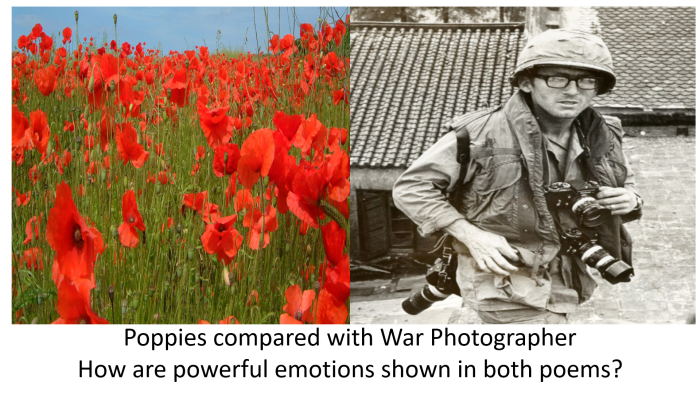
Share this:
6 thoughts on “ why i love…comparing in the aqa anthology: poppies and war photographer ”.
- Pingback: Why I love…Comparing Tissue and The Emigree – susansenglish
- Pingback: Why I love… AQA Comparisons Series: An Introduction – susansenglish
- Pingback: Why I love…Comparing Poems: AQA ‘Checking Out Me History’ with ‘The Emigree’ – susansenglish
omg thats amazing well done. It helped me a lot.
- Pingback: Why I love…Comparison Collection Power & Conflict AQA – susansenglish
Leave a comment Cancel reply
Social menu.
- Why I love…Closed Book for GCSE Literature
- Why I love…How – What – Why – Emotional Response for Analysis
- Why I love…Law in R&J
- Why I love…Instructions
- Why I love… My Dad
- Why I love…Challenging perceptions of drugs with students
- Why I love…#Hay30
- Why I love…Just another lesson
- Why I love…Considering Evaluation Style Questions
- Why I love… Challenging Apathy
- Why I love… Writing at the same time as the class
- Why I love … Religion in A Christmas Carol
- Why I love…Engagement in Y13 & Hamlet Podcasting
- Why I love… The Power of Three for Revising
- Why I love… Going back to basics: Instructions
- Why I love… Shakespeare (& think teaching it is so important)
- Why I love…Promoting Analysis
- Why I love…Considering Leadership Qualities
- Why I love…Easter & reading: the Carnegie shortlist
- Why I love…Quizlet
- Why I love… Engaging Revision or ‘The Final Push’
- Why I love… Metacognitive Activities
- Why I love… Quick Revision Wins
- Why I love… Thinking about Transactional Writing
- Why I love…Podcasting with @ChurchillEng
- Why I love… #LeadPChat
- Why I love… Teaching Hamlet
- Why I love…Teaching (part 2)
- Why I love…collaborative Inset @NSTA
- Why I love… Developing 2A: Non-Fiction Reading Unit @Eduqas_English
- Why I love…Encouraging Revision @Eduqas_English
- Why I love…Twitter Revision
- Why I love… exploding an extract
- Why I love… teaching the Language Reading Paper
- Why I love… teaching Unseen Poetry
- Why I love… Assessment policy development for the New GCSE @Eduqas_English
- Why I love… Considering Context @Eduqas Poetry Anthology
- What I love… about unpicking the Eduqas Language Fiction Paper 1A (A4 & A5 Only)
- What I love… unpicking the Eduqas Language Fiction Paper 1A (A1 – A3 Only)
- Why I love…(d) #TLT16
- What I love… about #WomenEd
- Why I love… Quotations and Retention
- Why I love positive parental contact…
- Why I love collaboration in Year 13…
- Why I love our Eduqas revision site
- Why I love to read…
- Why I love A Level & AS Level results…
- Why I love thinking about classroom displays…
- Why I love collaborative working…
- Why I love summer…
- Why I love teaching…
- Why I love…CPD Feedback
- What I love… the little things
- Why I love… Training @Eduqas_English
- Why I love… #lovetoRead My Desert Island Books
- Why I love…teaching poetry
- Education Based blog
- Why I love…The A5 Fiction/A4 Non-Fiction Evaluation Question
- Why I Love…Blog Series 18: Mametz Wood By Sheers
- Why I love… Scaffolding the Tension and Drama – Structure Question for @Eduqas_English
- Why I love…Scaffolding: Language Analysis Questions
- Why I love…Blog Series: Introducing Context (War focus)
- Why I love…Scaffolding: Comprehension A1 Fiction Language @Eduqas_English
- Why I love…Blog Series 17: Ozymandias by Shelley
- Why I Love…Building Girls’ Confidence: My #WomenEdSW session
- Why I love…Strategies for stretch and challenge
- Why I love… Developing Analysis using Triplets
- Why I love…Blog Series 16: Dulce et Decorum Est by Owen
- Why I Love… Blog Series 15: Afternoons by Larkin
- Why I love… Vocabulary Improvement Strategies
- Why I love…Blog series 14: To Autumn by Keats
- Why I love…Embedding Knowledge Organisers into learning
- Why I love…Whole Class Feedback & Other Time-Saving Feedback Strategies
- Why I love…Blog Series 13: Hawk Roosting by Hughes
- What I love…Learning from #TLT
- Why I Love… Live Modelling for across the curriculum
- Why I love…(d) #TLT17 @TLT17
- Why I love…Blog Series 12: Death of a Naturalist by Heaney
- Why I love…Blog Series 11: A Wife in London by Hardy
- Why I love…Blog Series 10: Valentine by Duffy
- Why I love…Eduqas Blog Series 9: Cozy Apologia by Dove
- Why I love…Eduqas Blog Series 8: As Imperceptibly as Grief By Dickinson
- Why I love…Literature Examiner key considerations
- Why I love…Eduqas Anthology: Blog Series 7 Living Space by Dharker
- Why I love…Unpicking the Eduqas Examiners report – Literature
- Why I love…Unpicking the Eduqas Examiners report – Language
- Why I love…Eduqas Anthology: Blog Series 6 – She Walks in Beauty Byron
- Why I love…Eduqas Anthology: Blog Series 5 – The Soldier by Rupert Brooke
- Why I love…Eduqas Anthology: Blog Series 4 – London by Blake
- Why I love…Eduqas Anthology: Blog Series 3 Sonnet 43
- Why I love…Eduqas Anthology: Blog Series 2 – The Manhunt
- Why I love…Closed Book for GCSE Literature
- Why I love…How – What – Why – Emotional Response for Analysis
- Why I love…Law in R&J
- Why I love…Instructions
- Why I love… My Dad
- Why I love…Challenging perceptions of drugs with students
- Why I love…Considering Evaluation Style Questions
- Why I love…Engagement in Y13 & Hamlet Podcasting
- Why I love…Teaching
- Why I love thinking about classroom displays…
- Why I love A Level & AS Level results…
- Why I love to read…
- What I love… about unpicking the Eduqas Language Fiction Paper 1A (A4 & A5 Only)
- Why I love…teaching poetry
- Why I love…CPD Feedback
- What I love… the little things
- Why I love… Training @Eduqas_English
- Why I love…Twitter Revision
- Why I love…Teaching (part 2)
- Why I love… Teaching Hamlet
- Why I love…Podcasting with @ChurchillEng
- Why I love… Quick Revision Wins
- Why I love…Easter & reading: the Carnegie shortlist
- Why I love…Considering Leadership Qualities
- Why I love… Shakespeare (& think teaching it is so important)

- Already have a WordPress.com account? Log in now.
- Subscribe Subscribed
- Copy shortlink
- Report this content
- View post in Reader
- Manage subscriptions
- Collapse this bar
Home — Essay Samples — Literature — Poetry — Comparison Between War Photography (Carol Duffy) and Poppies (Jane Weir)
"Poppies" and "War Photographer": a Comparison of War Poems
- Categories: Carol Ann Duffy Poetry
About this sample

Words: 514 |
Published: May 19, 2020
Words: 514 | Page: 1 | 3 min read
- Dowson, J., & Dowson, J. (2016). Voices from the 1980s and After. Carol Ann Duffy: Poet for Our Times, 87-121. (https://link.springer.com/chapter/10.1057/978-1-137-41563-9_3)
- Hughes-Edwards, M. (2006). ‘The House […] has Cancer’: Representations of Domestic Space in the Poetry of Carol Ann Duffy. In Our House (pp. 121-139). Brill. ( https://brill.com/display/book/9789401202817/B9789401202817_s010.xml)
- Dimarco, D. (1998). Exposing Nude Art: Carol Ann Duffy's Response to Robert Browning. Mosaic: A journal for the interdisciplinary study of literature, 25-39. ( https://www.jstor.org/stable/44029809)
- Schweik, S. (1987). Writing war poetry like a woman. Critical Inquiry, 13(3), 532-556 . ( https://www.journals.uchicago.edu/doi/abs/10.1086/448407?journalCode=ci)

Cite this Essay
Let us write you an essay from scratch
- 450+ experts on 30 subjects ready to help
- Custom essay delivered in as few as 3 hours
Get high-quality help

Dr. Karlyna PhD
Verified writer
- Expert in: Literature

+ 120 experts online
By clicking “Check Writers’ Offers”, you agree to our terms of service and privacy policy . We’ll occasionally send you promo and account related email
No need to pay just yet!
Related Essays
6 pages / 2918 words
2 pages / 1111 words
4 pages / 1811 words
1.5 pages / 724 words
Remember! This is just a sample.
You can get your custom paper by one of our expert writers.
121 writers online
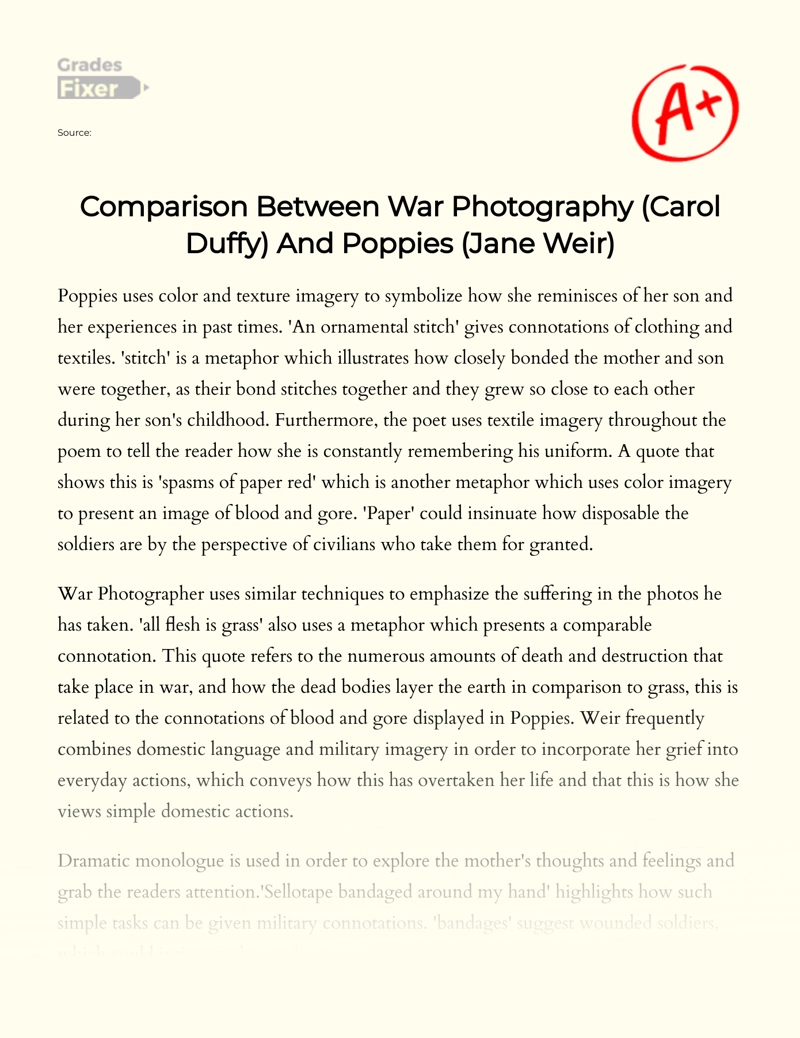
Still can’t find what you need?
Browse our vast selection of original essay samples, each expertly formatted and styled
Related Essays on Poetry
Allen Ginsberg is a prominent figure in American literature, known for his influential poetry that captures the essence of the Beat Generation and critiques the social and political landscape of America during the Cold War era. [...]
"Ballad of Birmingham" is the author of the poem that revolves around a little girl who would like to go downtown to take part in a freedom protest. Her mother, however, says that she cannot go because of the dangerous [...]
In the contemporary society, many people undergo challenges depending on the nature of their environment, or sometimes due to uncertain circumstances for which they have no control. Yet amidst the challenges, they often hold [...]
In the poem "One Boy Told Me" by Naomi Nye, the poet exudes sensitivity, compassion and great heart. Nye touches on her diverse personal experiences that form the backbone of the poem. It is very interesting the way she brings [...]
Christopher Marlowe’s “The Passionate Shepherd to His Love” and Andrew Marvell’s “To his Coy Mistress” offer powerful examples of sensual, carpe diem Renaissance poetry. In both poems, the poet-speakers attempt to spur their [...]
“Whenever a thing is done for the first time, it releases a little demon” (Dickinson, n.d.). At first glance, this utterance by Emily Dickinson conveys a negative attitude towards the unique and the new. However, upon second [...]
Related Topics
By clicking “Send”, you agree to our Terms of service and Privacy statement . We will occasionally send you account related emails.
Where do you want us to send this sample?
By clicking “Continue”, you agree to our terms of service and privacy policy.
Be careful. This essay is not unique
This essay was donated by a student and is likely to have been used and submitted before
Download this Sample
Free samples may contain mistakes and not unique parts
Sorry, we could not paraphrase this essay. Our professional writers can rewrite it and get you a unique paper.
Please check your inbox.
We can write you a custom essay that will follow your exact instructions and meet the deadlines. Let's fix your grades together!
Get Your Personalized Essay in 3 Hours or Less!
We use cookies to personalyze your web-site experience. By continuing we’ll assume you board with our cookie policy .
- Instructions Followed To The Letter
- Deadlines Met At Every Stage
- Unique And Plagiarism Free

War Photographer Summary & Analysis by Carol Ann Duffy
- Line-by-Line Explanation & Analysis
- Poetic Devices
- Vocabulary & References
- Form, Meter, & Rhyme Scheme
- Line-by-Line Explanations

"War Photographer" is a poem by Scottish writer Carol Ann Duffy, the United Kingdom's poet laureate from 2009 to 2019. Originally published in 1985, "War Photographer" depicts the experiences of a photographer who returns home to England to develop the hundreds of photos he has taken in an unspecified war zone. The photographer wrestles with the trauma of what he has seen and his bitterness that the people who view his images are unable to empathize fully with the victims of catastrophic violence abroad. The poem references a number of major historical air strikes and clearly draws imagery from Nick Ut's famous Vietnam War photograph of children fleeing the devastation of a napalm bomb.
- Read the full text of “War Photographer”
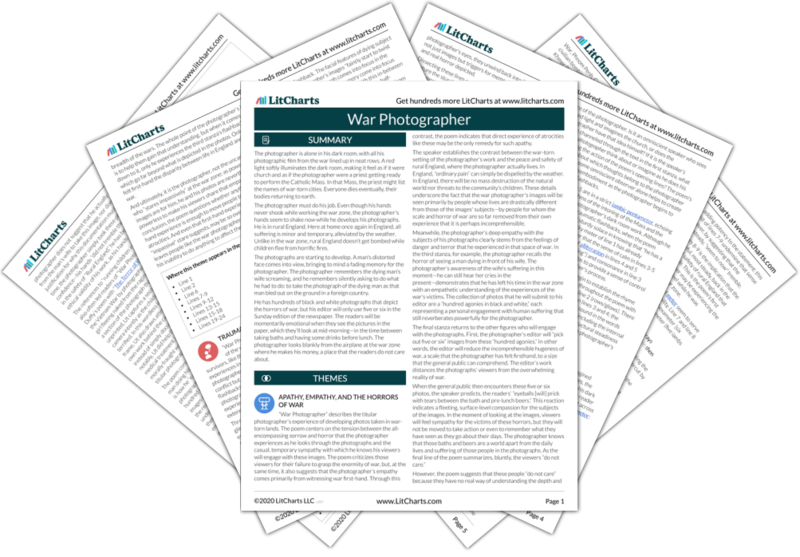
The Full Text of “War Photographer”
“war photographer” summary, “war photographer” themes.
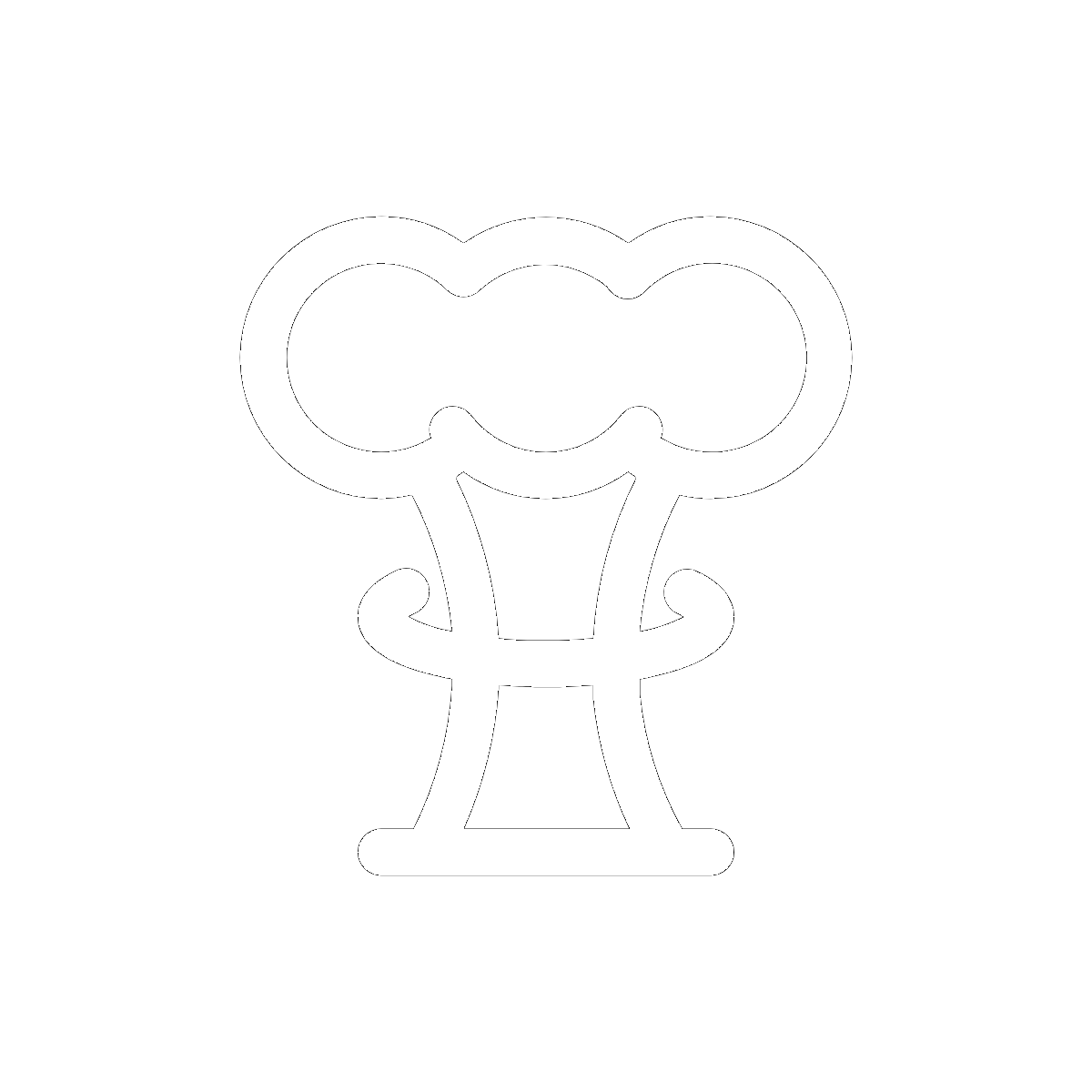
Apathy, Empathy, and the Horrors of War
Lines 13-15, lines 15-18.
- Lines 19-24

Trauma and Memory
Lines 11-12.
- Lines 13-18

The Ethics of Documenting War
Line-by-line explanation & analysis of “war photographer”.
In his dark ... ... in ordered rows.

The only light ... ... intone a Mass.
Belfast. Beirut. Phnom ... flesh is grass.
He has a ... ... seem to now.
Rural England. Home ... ... weather can dispel,
to fields which ... ... a nightmare heat.
Something is happening. ... ... a half-formed ghost.
He remembers the ... ... into foreign dust.
Lines 19-21
A hundred agonies ... ... for Sunday’s supplement.
Lines 21-22
The reader’s eyeballs ... ... and pre-lunch beers.
Lines 23-24
From the aeroplane ... ... do not care.
“War Photographer” Symbols

Photographs
- Line 2: “with spools of suffering set out in ordered rows”
- Line 7: “Solutions slop in trays”
- Lines 13-15: “A stranger’s features / faintly start to twist before his eyes, / a half-formed ghost”
- Line 19: “A hundred agonies in black and white”
“War Photographer” Poetic Devices & Figurative Language
Alliteration.
- Line 2: “s,” “s,” “s”
- Line 4: “th,” “th”
- Line 5: “pr,” “pr”
- Line 6: “B,” “B,” “P,” “P”
- Line 7: “H,” “h,” “S,” “s”
- Line 8: “h,” “h,” “th”
- Line 9: “th”
- Line 13: “S,” “s,” “t,” “f”
- Line 14: “f,” “s,” “t,” “t,” “t”
- Line 16: “h,” “h”
- Line 17: “w,” “w,” “w”
- Line 20: “s”
- Line 21: “S,” “s”
- Line 22: “b,” “b,” “b”
- Line 6: “Belfast. Beirut. Phnom Penh. All flesh is grass.”
- Lines 11-12: “to fields which don’t explode beneath the feet / of running children in a nightmare heat.”
- Line 6: “All flesh is grass.”
- Line 1: “I,” “i”
- Line 2: “o”
- Line 3: “o,” “o”
- Line 4: “ou,” “e,” “u,” “e”
- Line 5: “ie,” “a”
- Line 6: “e,” “a,” “e,” “e,” “a”
- Line 8: “i,” “i,” “i,” “e,” “e”
- Line 10: “i,” “i,” “ea,” “e”
- Line 11: “ie,” “o,” “o,” “ea,” “ee”
- Line 13: “i,” “i,” “i,” “a,” “e,” “u”
- Line 14: “ai”
- Line 15: “ie”
- Line 16: “i”
- Line 17: “o,” “o,” “a,” “o,” “o,” “u”
- Line 18: “oo,” “u”
- Line 19: “a,” “a,” “a”
- Line 20: “i,” “i,” “i,” “i,” “i,” “i”
- Line 21: “u,” “u,” “i”
- Line 22: “i,” “ea,” “ee,” “e,” “ee”
- Line 23: “a,” “a,” “a,” “e”
- Line 24: “i,” “i”
- Line 6: “Belfast. Beirut. Phnom Penh. All”
- Line 7: “do. Solutions”
- Line 8: “hands, which”
- Line 9: “now. Rural England. Home”
- Line 13: “happening. A”
- Line 15: “ghost. He”
- Line 16: “wife, how”
- Line 21: “supplement. The”
- Line 1: “r,” “r,” “n,” “ll,” “l,” “n”
- Line 2: “s,” “l,” “s,” “s,” “t,” “t,” “r,” “d,” “r,” “d,” “r”
- Line 3: “l,” “l,” “l,” “l”
- Line 5: “pr,” “pr,” “p,” “r,” “t,” “t,” “ss”
- Line 6: “B,” “s,” “t,” “B,” “t,” “P,” “n,” “P,” “n,” “ll,” “l”
- Line 7: “H,” “h,” “S,” “l,” “sl”
- Line 8: “h,” “s,” “h,” “s,” “t,” “t,” “th”
- Line 9: “th,” “R,” “r,” “g,” “g,” “n”
- Line 10: “n,” “p,” “n,” “w,” “p,” “l,” “w,” “d,” “p,” “l”
- Line 11: “l,” “d,” “d,” “pl,” “d,” “th,” “th”
- Line 12: “n,” “n”
- Line 13: “S,” “str,” “r,” “s,” “t,” “r,” “s”
- Line 14: “f,” “t,” “st,” “t,” “t,” “t,” “st”
- Line 15: “f,” “f”
- Line 16: “w,” “h,” “w,” “h”
- Line 17: “w,” “w,” “d,” “d,” “w,” “eo”
- Line 18: “d,” “st,” “d,” “d,” “st”
- Line 21: “S,” “s,” “s,” “s,” “r”
- Line 22: “t,” “rs,” “b,” “tw,” “th,” “b,” “th,” “r,” “b,” “rs”
- Line 23: “s,” “r,” “ss,” “r”
- Line 24: “r,” “s,” “s”
End-Stopped Line
- Line 2: “rows.”
- Line 3: “glows,”
- Line 5: “Mass.”
- Line 6: “grass.”
- Line 10: “dispel,”
- Line 12: “heat.”
- Line 14: “eyes,”
- Line 18: “dust.”
- Line 22: “beers.”
- Line 24: “care.”
- Lines 1-2: “alone / with”
- Lines 4-5: “he / a”
- Lines 7-8: “trays / beneath”
- Lines 8-9: “then / though”
- Lines 9-10: “again / to”
- Lines 11-12: “feet / of”
- Lines 13-14: “features / faintly”
- Lines 15-16: “cries / of”
- Lines 16-17: “approval / without”
- Lines 17-18: “must / and”
- Lines 19-20: “white / from”
- Lines 20-21: “six / for”
- Lines 21-22: “prick / with”
- Lines 23-24: “where / he”
- Line 2: “spools of suffering”
- Line 6: “All flesh is grass”
Parallelism
- Lines 10-11: “to ordinary pain which simple weather can dispel, / to fields which don’t explode beneath the feet”
- Lines 16-18: “how he sought approval / without words to do what someone must / and how the blood stained into foreign dust.”
- Lines 4-5: “as though this were a church and he / a priest preparing to intone a Mass.”
“War Photographer” Vocabulary
Select any word below to get its definition in the context of the poem. The words are listed in the order in which they appear in the poem.
- "All flesh is grass"
- Sunday's supplement
- Impassively
- (Location in poem: Line 1: “dark room”)
Form, Meter, & Rhyme Scheme of “War Photographer”
Rhyme scheme, “war photographer” speaker, “war photographer” setting, literary and historical context of “war photographer”, more “war photographer” resources, external resources.
"War Photographer" Read Aloud — Listen to the poem read aloud.
Trailer for the Documentary "War Photographer" — Watch the trailer for the 2011 documentary War Photographer, which explores the responsibilities of photographers in war zones, focusing on photographer James Nachtwey.
"The Terror of War" — Explore Nick Ut's image from the Vietnam War, "The Terror of War." This famous photograph may have inspired "War Photographer." Note the second photographer at the right of the image examining his camera as children run by him, burnt and naked.
Carol Ann Duffy Biography — Learn more about Carol Ann Duffy, Britain's first female Poet Laureate, on Poets.org.
Interview with War Photographer Nick Ut — Watch this NBC interview with Vietnam War photographer Nick Ut about taking his famous photo depicting the naked "Napalm Girl" and the responsibility of photographers in war zones. Ut's comments intersect potently with the themes explored in "War Photographer."
LitCharts on Other Poems by Carol Ann Duffy
A Child's Sleep
Anne Hathaway
Before You Were Mine
Death of a Teacher
Education For Leisure
Elvis's Twin Sister
Head of English
In Mrs Tilscher’s Class
In Your Mind
Little Red Cap
Mrs Lazarus
Mrs Sisyphus
Pilate's Wife
Pygmalion's Bride
Queen Herod
Recognition
Standing Female Nude
The Darling Letters
The Dolphins
The Good Teachers
Warming Her Pearls
We Remember Your Childhood Well
Everything you need for every book you read.


- TOP CATEGORIES
- AS and A Level
- University Degree
- International Baccalaureate
- Uncategorised
- 5 Star Essays
- Study Tools
- Study Guides
- Meet the Team
- English Literature
War Photographer
This is a preview of the whole essay

Document Details
- Word Count 685
- Page Count 2
- Level AS and A Level
- Subject English

Related Essays

'Commentary on War Photographer' by Carol Ann Duffy.

Poetry Comparison of 'I Shall Return' and 'War Photographer'.

Compare "War Photograph" by Kate Daniels and "War Photographer" by Carol An...
Resources you can trust
Comparing 'Remains' and 'War Photographer'
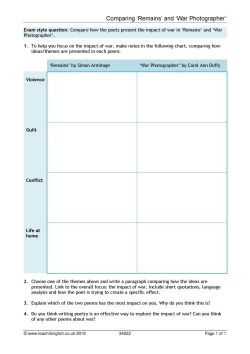
All reviews
Have you used this resource?
Resources you might like
- International
- Schools directory
- Resources Jobs Schools directory News Search

Model Answer: Comparing War Photographer and Poppies
Subject: English
Age range: 14-16
Resource type: Assessment and revision
Last updated
21 June 2020
- Share through email
- Share through twitter
- Share through linkedin
- Share through facebook
- Share through pinterest

A detailed, high-level model answer comparing War Photographer and Poppies.
All essays receive a grade and a very detailed commentary analysing the strengths and weaknesses of the answer. This enables students to identify good practice and techniques to implement in their work. Answers should also act as a source of inspiration for students introduce them to different responses to the text.
All answers were written by a high attaining GCSE age student under exam conditions. Therefore, the answers are not expected to be perfect but realistic representations of what can be achieved during a GCSE exam.
This resource has been targeted at the AQA specification but will still be useful to all GCSE English Literature students.
Check out the rest of the series and other great resources in my Tes Shop.
Any Enquires: Email – [email protected]
Tes paid licence How can I reuse this?
Get this resource as part of a bundle and save up to 50%
A bundle is a package of resources grouped together to teach a particular topic, or a series of lessons, in one place.
English Literature Paper 2: Model Answers - Bundle 1
A detailed set of 5 model answer on J B Priestley's 'An Inspector Calls' the AQA Power and Conflict poetry anthology and unseen poetry. Together this forms Sections A, B and C of AQA GCSE English Literature Paper 2. The answers included in this bundle are: An Inspector Calls Conflict between generations Gender Priestley’s intentions The importance of Eva The importance of the Inspector Poetry Anthology Comparing Exposure and Charge of the Light Bridgade London and Checking out Me History Ozymandias and The Prelude The Prelude and Kamikaze War Photographer and Poppies Unseen Poetry Blessing The Rear-Guard The Wild Swans Autumn Piano This allows students to understand how to structure their arguments to achieve full marks. At the end of the essay is the mark as well as a detailed comment analysing the student’s strengths and weaknesses. This enables students to understand what parts of the essay have been so successful. This resource has been written for AQA, but will be useful to all students studying English Literature. This is bundle 1 and offers excellent value for money. Included in this set are 15 answers. Check out the rest of the series and other great resources in my Tes Shop. Any Enquires: Instagram - @thomasd0resources Twitter - @thomasd01resou1 Email - [email protected]
Power and Conflict - Model Answers Complete Collection
This is a detailed set of 9 model answer on the 'Power and Conflict' poetry. The answers included in this bundle are: * Ozymandias and My Last Duchess * Tissue and London * Bayonet Charge and Remains * Exposure and Charge of the Light Brigade * London and Checking Out Me History * Ozymandias and The Prelude * The Emigree and Storm on the Island * The Prelude and Kamikaze * War Photographer and Poppies All essays receive a grade and a very detailed commentary analysing the strengths and weaknesses of the answer. This enables students to identify good practice and techniques to implement in their work. Answers should also act as a source of inspiration for students introduce them to different responses to the text. All answers were written by a high attaining GCSE age student under exam conditions. Therefore, the answers are not expected to be perfect but realistic representations of what can be achieved during a GCSE exam. This resource has been targeted at the AQA specification but will still be useful to all GCSE English Literature students. This is the complete collection, comprimising all of the answers from both bundle 1 and bundle 2, for a discounted price. Check out the rest of the series and other great resources in my Tes Shop. Any Enquires: Email - [email protected]
Power and Conflict - Poetry Anthology: Model Answers 1
A detailed set of 5 model answer on the power and conflict poetry anthology. The answers included in this bundle are: * Comparing Exposure and Charge of the Light Bridgade * London and Checking out Me History * Ozymandias and The Prelude * The Prelude and Kamikaze * War Photographer and Poppies This allows students to understand how to structure their arguments to achieve full marks. At the end of the essay is the mark as well as a detailed comment analysing the student’s strengths and weaknesses. This enables students to understand what parts of the essay have been so successful. This resource has been written for AQA, but will be useful to all students studying the poems from power and conflict. This is bundle 1 and offers excellent value for money. Check out the rest of the series and other great resources in my Tes Shop. Any Enquires: Email - [email protected]
GCSE English Literature Model Answers
A detailed set of 5 model answer on Charles Dickens’ ‘A Christmas Carol’, Willaim Shakespeare’s ‘Romeo and Juliet’, J B Priestley's 'An Inspector Calls' and the Power and Conflict poetry anthology. Together this forms all of AQA GCSE English Literature Paper 1 and Sections A and B of AQA GCSE English Literature Paper 2. The answers included in this bundle are: A Christmas Carol: Happiness The most powerful spirit Working life Attitudes to Christmas The importance of family Romeo and Juliet: Honour Juliet as a faithful daughter Lady Capulet as a mother Romeo and Juliet’s love The Nurse as a friend to Juliet An Inspector Calls: Conflict between generations Gender Priestley’s intentions The importance of Eva The importance of the Inspector Poetry Anthology: Comparing Exposure and Charge of the Light Bridgade London and Checking out Me History Ozymandias and The Prelude The Prelude and Kamikaze War Photographer and Poppies This allows students to understand how to structure their arguments to achieve full marks. At the end of the essay is the mark as well as a detailed comment analysing the student’s strengths and weaknesses. This enables students to understand what parts of the essay have been so successful. This resource has been written for AQA, but will be useful to all students studying the poems from power and conflict. This is bundle 1 and offers excellent value for money. Check out the rest of the series and other great resources in my Tes Shop. Any Enquires: Instagram - @thomasd0resources Twitter - @thomasd01resou1 Email - [email protected] This allows students to understand how to structure their arguments to achieve full marks. At the end of the essay is the mark as well as a detailed comment analysing the student’s strengths and weaknesses. This enables students to understand what parts of the essay have been so successful. This resource has been written for AQA, but will be useful to all students studying ‘Romeo and Juliet’, 'A Christmas Carol', 'An Inspector Calls' and the poems of 'Power and Conflict'. This is bundle 1 and offers excellent value for money. Included in this set are 20 answers. Check out the rest of the series and other great resources in my Tes Shop. Any Enquires: Instagram - @thomasd0resources Twitter - @thomasd01resou1 Email - [email protected]
Your rating is required to reflect your happiness.
It's good to leave some feedback.
Something went wrong, please try again later.
A useful resource to share with students, and the examiner comments are helpful to show where marks were awarded and how the essay could be improved. Thanks.
Empty reply does not make any sense for the end user
ChalkandChallenges
Report this resource to let us know if it violates our terms and conditions. Our customer service team will review your report and will be in touch.
Not quite what you were looking for? Search by keyword to find the right resource:
Skip to content
Get Revising
Join get revising, already a member, comparison between war photography (carol duffy) and poppies (jane weir).
- Created by: SamSkin
- Created on: 01-04-17 15:27
- English Literature
- AQA Anthology
Report Thu 22nd March, 2018 @ 21:12
Its War Photographer not War Photography. :)
Report Fri 19th October, 2018 @ 21:15
this helps alot
Report Mon 10th December, 2018 @ 19:58
Thanks great homework help.
Report Fri 1st February, 2019 @ 10:16
Report Wed 28th April, 2021 @ 11:33
Report Thu 16th June, 2022 @ 13:17
dead poem never reading this again it made my grandma disintigrate like dust
Report Thu 16th June, 2022 @ 13:18
i lied admaski is fake and im a lier with no firiends
Report Thu 16th June, 2022 @ 13:20
icl if anyone ever shows me this poem again im going to body slam them into a concrete wall then procede to curb stomp them at least 46 times until their head is not visible to the nakes eye SYM.
Report Mon 7th November, 2022 @ 18:16
Report Fri 2nd December, 2022 @ 11:08
Report Fri 2nd December, 2022 @ 11:09
Similar English Literature resources:
War Photographer - Carol Ann Duffy (born 1955) 4.0 / 5 based on 1 rating
poppies context 4.5 / 5 based on 5 ratings
War Photographer by Carol Ann Duffy 0.0 / 5
Poems 4.0 / 5 based on 4 ratings
English Poems 4.0 / 5 based on 1 rating
War Photographer- Carol Ann Duffy 4.0 / 5 based on 4 ratings
Poetry 0.0 / 5
CAROL ANN DUFFY: 'WAR PHOTOGRAPHER' 1.0 / 5 based on 7 ratings
English Lit conflict poetry 0.0 / 5
Related discussions on The Student Room
- English Lit GCSE »
- Gcse english Language Paper 2 »
- Compare how the theme of remorse is presented in both 'War Photographer' and 'Poppies »
- AQA Power and Conflict poems to compare to eachother »
- A-level English Language and Literature Study Group 2022-2023 »
- Can someone mark this english essay about poppies and remains. »
- Poppies vs Remains Comparison - Please help! »
- Edexcel GCSE English Literature Paper 2 (1ET0 02) - 24th May 2023 [Exam Chat] »
- Poetry Anthology Help »
- AQA GCSE English Literature Paper 1 8702/1P - 25 May 2022 [Exam Chat] »
Editorial: John Eastman tried to help Trump overturn the 2020 election. Of course he should be disbarred
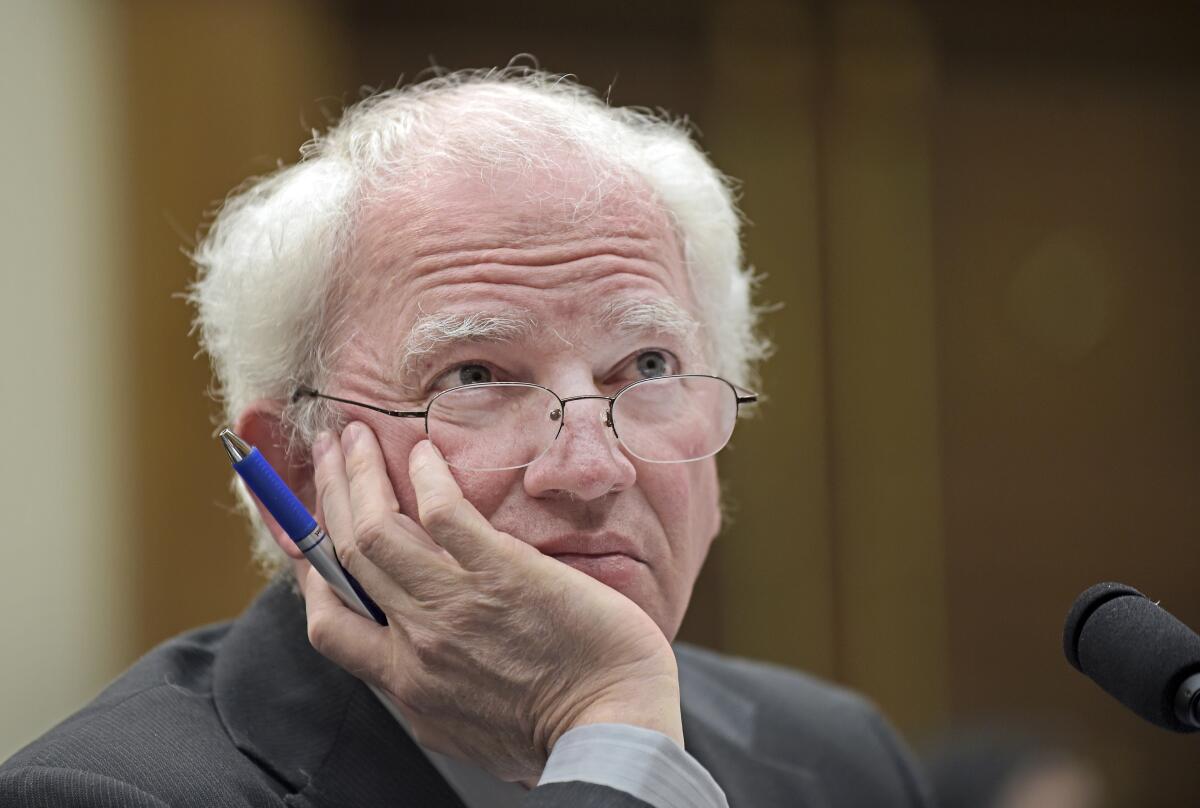
- Show more sharing options
- Copy Link URL Copied!
When lawyers lose their licenses to practice law, it’s typically because they mistreated their clients. Perhaps they improperly spent the client’s money to pay off personal bills, rather than to hire investigators or experts, or otherwise work on the case. Maybe they regularly failed to meet deadlines for filing court papers, or just weren’t sufficiently zealous in representing their clients’ interests.
The State Bar of California’s case against attorney and legal scholar John C. Eastman was quite different.
Eastman was zealous, and then some, in crafting legal arguments and strategies that attempted to justify the disproven claims of his client — Donald Trump — that he was cheated out of reelection in 2020, and that Vice President Mike Pence had superpowers to accept or reject state election results involving Trump’s candidacy, and his own.
Only rarely do licensing authorities discipline lawyers for going overboard on their clients’ behalf, and for good reason. Lawyers should have leeway to try a range of arguments and legal theories, and should not be sanctioned for being novel or even audacious in advocating for their clients. They should not be punished for arguing theories not currently in vogue. They are protected by the 1st Amendment.

Column: John Eastman’s journey from respectable O.C. Republican to Batman villain
At some point, Eastman changed for the worse. The man I remember became a full-on culture warrior.
June 20, 2022
Up to a point.
A lawyer’s duty, crucially, extends beyond the client. Attorneys are officers of the court, and key figures in a system whose purpose is to determine the truth, apply the law and achieve justice. California lawyers take an oath to support the Constitution and to conduct themselves with integrity.
A State Bar Court judge on Wednesday ruled — appropriately and wisely — that in providing legal cover for Trump’s dishonest bid to subvert the 2020 election, Eastman violated his oath, undermined the quest for truth and justice, and inflicted serious and perhaps lasting damage on the very institutions of democracy and law that are the foundation of his profession.
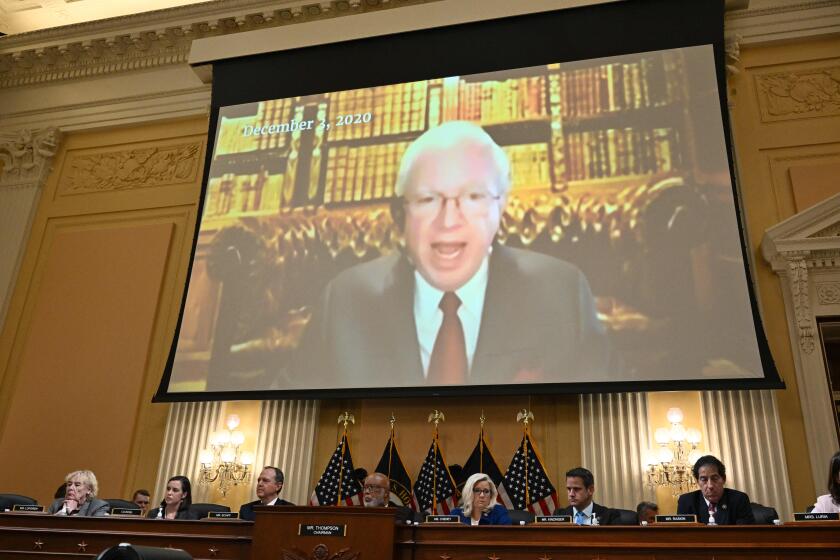
How John Eastman’s role in Jan. 6 still haunts the California university where he taught
John Eastman, the former Trump lawyer who helped foment the plan to invalidate the 2020 election results, left the Chapman University law faculty last year. But his legacy still sparks campus questions.
July 8, 2022
Notwithstanding Eastman’s reputation as a legal scholar and former dean of Chapman Law School in Orange — and as a 2010 candidate for California attorney general — Judge Yvette Roland recommended that he be permanently disbarred.
The final decision is up to the state Supreme Court.
It would best serve California, the legal profession and election integrity for the court to follow Roland’s recommendation. Eastman’s conduct was egregious. As Trump was selling his election fraud fairy tale to the public, and after states’ election officials certified slates of electors, state and federal courts rejected suits to overturn the certifications and state legislatures rejected challenges, Eastman wrote two memos mapping out plans for Pence to ignore all of those actions on Jan. 6, 2021.
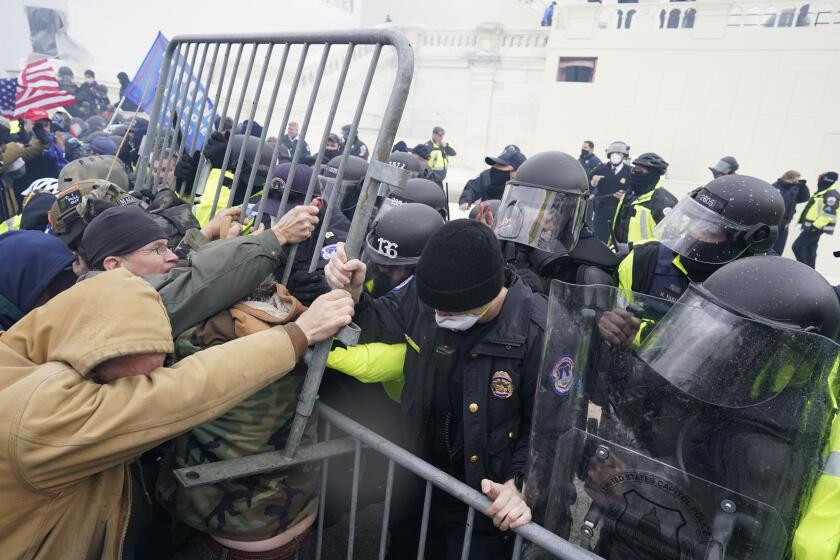
Editorial: Jan. 6 insurrection was the result of a continuing war on truth
The attack on the U.S. Capitol was a consequence of one Big Lie about the 2020 presidential election heaped atop a slew of marginally smaller lies.
Jan. 6, 2022
In the words of the State Bar’s trial counsel, Eastman demonstrated that he knew his role as Trump’s lawyer “was not to provide good faith advocacy, but to fabricate an illusion of legality to an illegal effort to delay the formal recognition of Trump’s obvious defeat by any means possible.”
He used his law license to provide cover for an illegal scheme. He counseled Pence to break the law. He made, or stood behind, statements that he almost certainly knew to be false, such as an argument by Texas officials in its lawsuit to undermine the election that the probability of Biden actually winning in four states — given Trump’s lead in early election night counting — were “less than one in a quadrillion to the fourth power.” His legal arguments were specious.
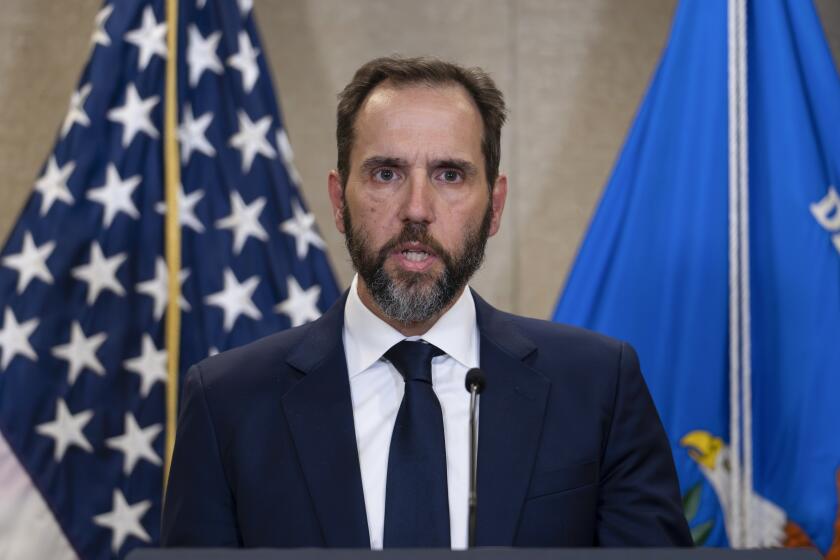
Editorial: No immunity for Trump. Former presidents don’t have a ‘get-out-of-jail-free’ card
Special counsel Jack Smith has the right to ask the Supreme Court to expedite the former president’s case. Time is of the essence because Trump could be the GOP’s 2024 presidential nominee.
Dec. 20, 2023
Roland cited the example of Donald Segretti , a California lawyer who became infamous during the Watergate scandal amid President Nixon’s 1972 reelection campaign. Segretti’s misconduct was child’s play in comparison to Eastman’s. He faked letters to stir chaos among Democratic candidates. His dirty tricks had nothing to do with his being a lawyer, yet he was suspended from law practice for two years for failing to uphold the ethical standards of the legal profession.
Eastman’s actions were infinitely worse and require much tougher sanctions. He didn’t merely lie in an attempt to change voters’ minds. He actively tried to disenfranchise voters who had already cast their ballots, in what Roland called “an egregious and unprecedented attack on our democracy.”
Did Trump commit a crime when he relied on Eastman’s legal arguments to subvert the 2020 presidential election? Did Eastman ? That question may ultimately come before a Georgia jury. The question currently before the California Supreme Court is whether, given all of the former president’s misconduct, his lawyer is fit to remain an officer of the court in this state.
The answer should be obvious.
More to Read

Column: Justice is finally coming to some of the liars and cheats who enabled Trump
March 30, 2024

Former Trump lawyer John Eastman should lose his license, judge rules
March 27, 2024
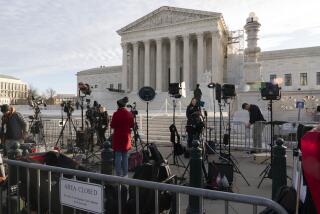
Letters to the Editor: Justices are allowing an adjudicated insurrectionist on the ballot. Shame on them
March 6, 2024
A cure for the common opinion
Get thought-provoking perspectives with our weekly newsletter.
You may occasionally receive promotional content from the Los Angeles Times.
The Los Angeles Times’ editorial board determines the positions of The Times as an institution. It operates separately from the newsroom. You can read more about the board’s mission and its members at About The Times Editorial Board .
More From the Los Angeles Times
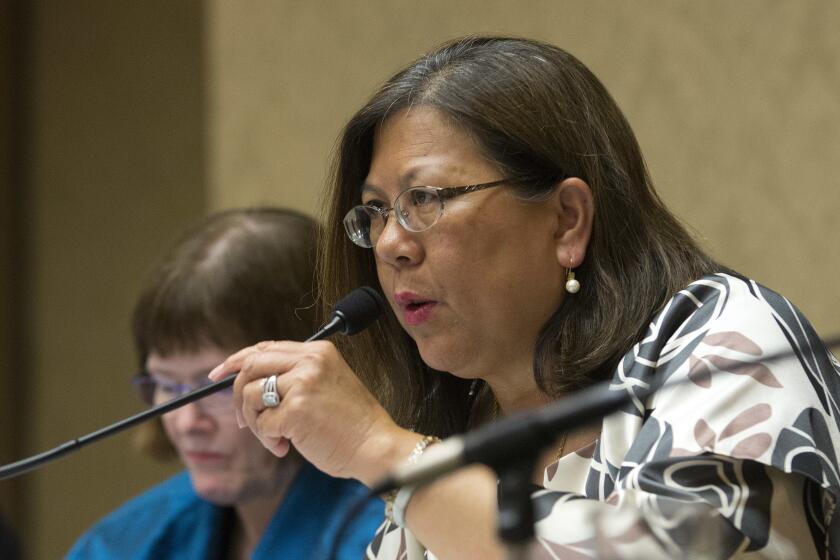
Editorial: At long last, women finally have a real shot at California’s top job
March 29, 2024
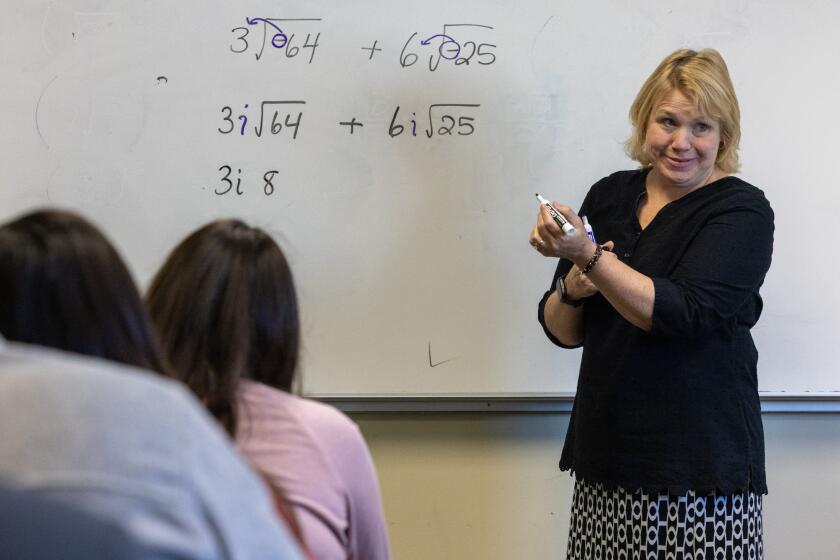
Editorial: Not every student needs Algebra 2. UC should be flexible on math requirement
March 28, 2024

Editorial: Bring buttons and dials back to new cars. Touch screens distract drivers

Editorial: On medication abortion, the Supreme Court may actually do the right thing

IMAGES
VIDEO
COMMENTS
Both 'War Photographer' and 'Remains' explore guilt. In the third stanza of War Photographer, Duffy makes the photographer's guilt clear by writing that he sees a 'half-formed ghost' when he develops one of the photographs. Duffy's imagery in the words 'half-formed' helps the reader to imagine the photograph slowly ...
Grade 9 GCSE Essay - AQA - June 2019 Compare how poets present the ways that people are affected by war in 'War Photographer' and in one other poem from 'Power and Conflict'. In 'War Photographer', the protagonist appears to have become inured and desensitised to the horrors of war. ... In 'War Photographer', there is a semantic ...
Hopefully, the comparisons make sense. Any feedback is much appreciated. I've linked here to the other comparison blogs and at some point there will be a full set across the Anthology. A copy of the essay can be downloaded here: Poppies vs War Photographer. Why I love…Comparing AQA poems a series: Ozymandias and My Last Duchess
Revision notes on War Photographer for the AQA GCSE English Literature syllabus, written by the English Literature experts at Save My Exams. ... The essay you are required to write in your exam is a comparison of the ideas and themes explored in two of your anthology poems. It is therefore essential that you revise the poems together, in pairs ...
Grade 9 GCSE Essay - AQA - November 2020 Compare how poets present the ways people are affected by difficult experiences in 'Remains' and in one other poem from 'Power and conflict'. Both 'Remains' by Simon Armitage and 'War Photographer' by Carol Ann Duffy explore the emotional, physical and psychological impacts on the poems ...
Overall, despite the fact that both War Photographer and Poppies show to the reader that the effects of war and conflict are uncontrollable, War Photographer focuses less on how emotions can overcome your conscience, and more on the idea that people are separating themselves from the suffering and struggles, whereas Poppies focuses on how those who are not directly involved in war are ...
GCSE Grade 9 AQA Power and Conflict Poetry Essay - Comparing Simon Armitage's 'Remains' with Carol Ann Duffy's 'War Photographer'.You can also access this co...
GCSE Grade 9 AQA Power and Conflict Poetry Essay - Comparing Carol Ann Duffy's 'War Photographer' with Simon Armitage's 'Remains'You can also access this com...
Carol Ann Duffy. Nationality: Poem Analyzed by Dharmender Kumar. Degrees in English Literature, Mass Communication, and Law. ' War Photographer ' begins in a very private setting, which is "In his darkroom," which means a place of peace and tranquillity. The man (photographer) has been to all the trouble spots of the world, such as ...
Get LitCharts A +. "War Photographer" is a poem by Scottish writer Carol Ann Duffy, the United Kingdom's poet laureate from 2009 to 2019. Originally published in 1985, "War Photographer" depicts the experiences of a photographer who returns home to England to develop the hundreds of photos he has taken in an unspecified war zone.
When 'War Photographer' was written in 1987, several major wars and conflicts were going on in the world: One of these was the Iran-Iraq war of 1980-1988. The Soviet-Afghan War of 1979-1989 was also in progress. The Lebanon War of 1982 happened just before Satyamurti wrote 'War Photographer'.
War Photographer- he has a choice to be a war photographer whereas, a soldier is trapped in war and is unable to escape. Overall comparison. Both are similar in the sense that they reveal the truth and reality of war; the different effects it has on the human psyche.
Compare the ways that effects of conflict are presented in War Photographer and one other poem from the conflict & power cluster. Plan: Effects of conflict Named poem (War Photographer) Chosen Poem (Remains) M The poem projects the harsh reality of how many people are actually affected by the war, that the reader does not consider.
AS and A Level English. War Photographer is an emotional poem, designed to move, but also inform the reader. Carol Ann Duffy tries to reflect the views of a photographer conveying the pictures of suffering and grief back home- England. The structure of the poem allows the second and third as well as the last two lines of every stanza to rhyme ...
Comparison of War Photographer and Poppies 3 motherly actions, heightened emotions and scenes of letting go, to finally hanging on to delusion, Zhoping to hear his voice [, as a way of keeping sane. However, both poems [ cyclical structures reflect the repetitive and never-ending nature of their pain, because war is never-
"War Photographer" is also written from the third person but describes in detail the perspective of its subject. The photographer, like the boy, is alone and in silence. He is reflecting upon the ...
Worksheet. In this resource, students compare the impact of war in two poems from the Power and conflict cluster of the AQA anthology, 'War Photographer' and 'Remains'. It includes an exam-style question, comparison table and focus questions. 102.09 KB.
Summary. 'War Photographer' by Carole Satyamurti presents the horrors of war by the use of a few contrasting images. 'War Photographer' by Carole Satyamurti begins with a description of a firmly edged photo-frame. It reminds the readers of the rigidity of war. Secondly, the poet presents a contrasting image of a few "sun-gilded girls ...
A detailed, high-level model answer comparing War Photographer and Poppies. All essays receive a grade and a very detailed commentary analysing the strengths and weaknesses of the answer. This enables students to identify good practice and techniques to implement in their work. Answers should also act as a source of inspiration for students ...
Compare how the theme of remorse is presented in both 'War Photographer' and 'Poppies » AQA Power and Conflict poems to compare to eachother » A-level English Language and Literature Study Group 2022-2023 » Can someone mark this english essay about poppies and remains. » Poppies vs Remains Comparison - Please help!
In comparison, the poem War Photographer uses different elements to emphasise the horrors of war. In War Photographer, the narrator is withdrawn and recounts memories in comparison to his home as he looks out on "fields which don't explode beneath the feet of running children". This sentence shows the true horrors of war; no-one is safe from it ...
• poets' use of language, form and structure • the influence of the contexts in which the poems were written. In both "Belfast Confetti' and 'War Photographer', the authors present the experience of conflict in different ways. In 'Belfast Confetti', the experience of conflict is shown through the vivid description of Carson's chaotic, disorientated state of mind during the ...
Legal scholar John Eastman earned his disbarment by the State Bar of California by pushing legal theories that went well beyond the very wide latitude given lawyers for their zealous advocacy.